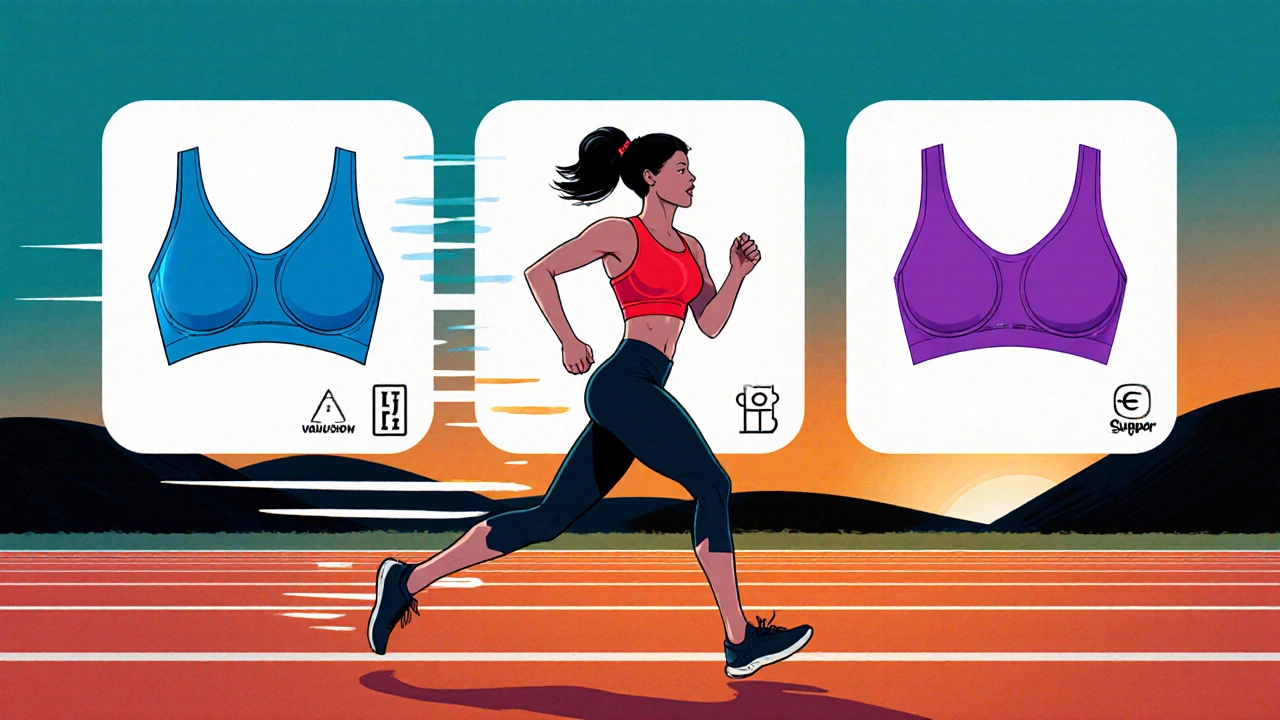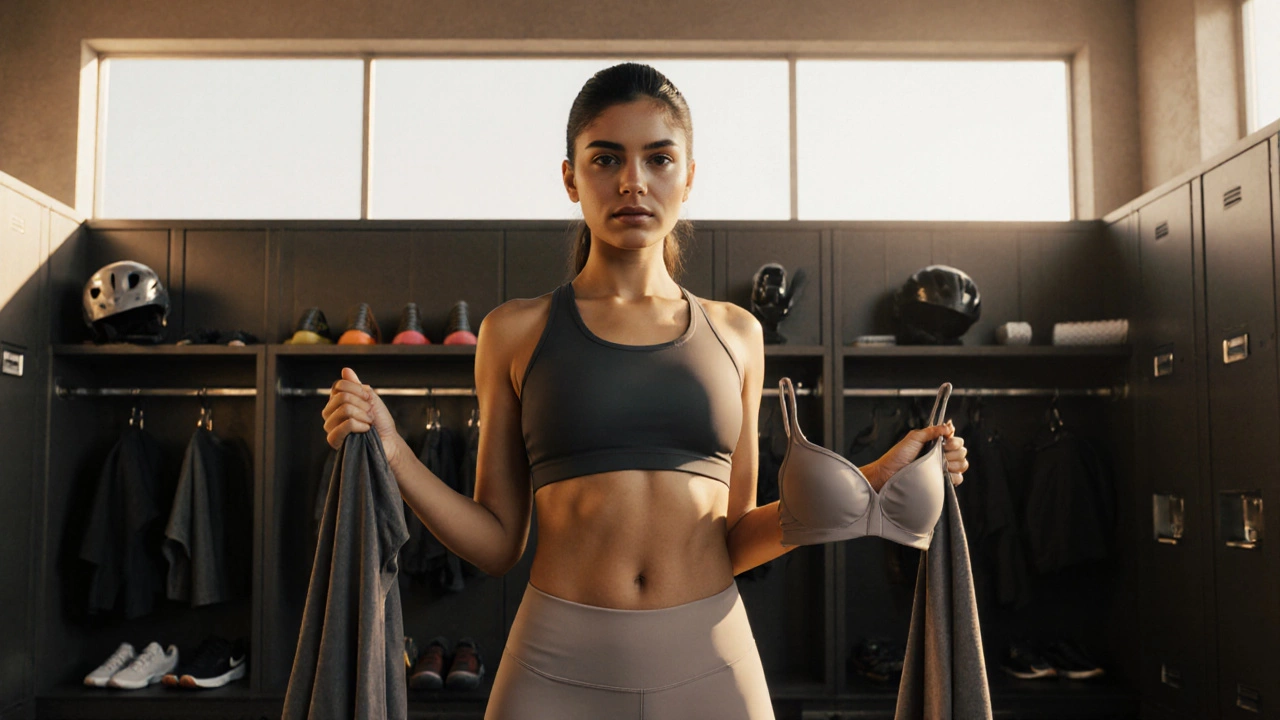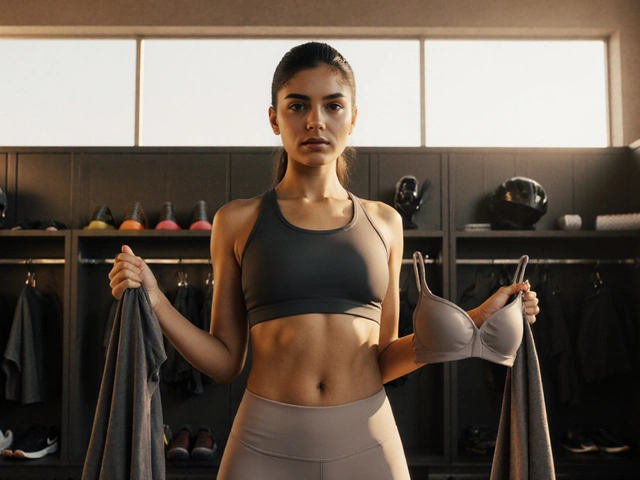Sports Bra Selector Tool
Find Your Perfect Sports Bra
Get personalized recommendations based on your activity level, breast size, and menstrual phase. Proper support reduces injury risk by up to 30%.
Select options to see your recommendation
Key Takeaways
- Fit and function matter more than style when choosing gear for women.
- Proper sports bras, shoes, and protective gear can cut injury risk by up to 30%.
- Nutrition and menstrual‑cycle awareness are integral parts of performance.
- Invest in versatile pieces that transition across multiple sports.
- Use the checklist at the end to avoid missing any essential item.
When it comes to sports equipment for women, the challenge isn’t just finding something that looks good-it’s about finding gear that works with the body’s unique biomechanics, hormonal cycles, and safety needs. Below is a hands‑on guide that takes you from the basics of apparel to the finer points of nutrition and recovery.
Female athletes are individuals who compete or train in organized sports, ranging from elite Olympians to weekend league players. Their performance hinges on a blend of physical conditioning, mental focus, and the right equipment. Understanding what they need starts with recognizing two facts: women generally have a wider pelvis, narrower shoulders, and experience hormonal fluctuations that affect energy levels and joint stability.
1. Performance Apparel That Moves With You
Apparel isn’t a fashion afterthought; it’s a performance tool.
- Performance apparel includes moisture‑wicking tops, compression tights, and temperature‑regulating jackets. Look for fabrics with a 4‑way stretch and antimicrobial treatment.
- Flat seams reduce chafing during long runs or bike rides.
- UV‑protective fabrics are a must for outdoor sports.
2. The Sports Bra Dilemma: Find the Right Support
Choosing the right sports bra can feel like a science experiment, but you only need three data points: activity intensity, breast size, and fit.
| Type | Support Level | Best For | Typical Price (USD) |
|---|---|---|---|
| Compression | Low‑to‑Medium | Yoga, Pilates, walking | 30‑50 |
| Encapsulation | High | Running, HIIT, CrossFit | 60‑90 |
| Hybrid (Compression + Encapsulation) | Very High | Marathon, high‑impact sports | 80‑120 |
Fit tip: The band should sit level across the chest and feel snug without digging. Straps must be adjustable and stay in place during movement.
3. Athletic Shoes: Size Isn’t Everything
Athletic shoes provide the foundation for every stride, jump, or pivot. Women’s feet tend to be narrower in the forefoot and have a higher arch. When shopping:
- Measure both feet; the larger foot dictates size.
- Check the heel‑to‑toe drop; a 4‑6mm drop works for most runners.
- Prioritize shoes with a roomy toe box - it reduces stress on the metatarsals.
- Replace shoes every 300‑500km (or every 6‑8 months) to maintain cushioning.

4. Protective Gear: Don’t Skip the Basics
Injury prevention often comes down to wearing the right gear at the right time.
- Protective gear includes helmets, mouthguards, shin guards, and knee pads. Even recreational players benefit from a well‑fitted mouthguard-studies show a 50% drop in dental injuries.
- For contact sports (soccer, rugby, basketball), consider padded compression shorts with built‑in hip and thigh guards.
- Women in high‑impact sports often need a pelvic protector; there are low‑profile options that won’t hinder movement.
5. Nutrition & Hydration: Fuel the Female Engine
Nutrition isn’t a one‑size‑fits‑all. Female athletes have distinct iron, calcium, and vitaminD requirements.
- Iron: Aim for 18mg/day (vs. 8mg for men). Include lean red meat, lentils, or iron‑fortified cereals.
- Calcium: 1300mg/day to support bone density-think Greek yogurt, kale, fortified plant milks.
- VitaminD: 600-800IU daily; sunlight plus a supplement during winter months.
- Nutrition supplements like beetroot juice, beta‑alanine, and creatine monohydrate can boost endurance and power when used correctly. Choose third‑party tested brands (e.g., NSF Certified).
6. Training Programs & Recovery Tools
Effective training blends strength, mobility, and sport‑specific drills.
- Training programs should incorporate periodization-alternating load, intensity, and recovery weeks. For women, schedule a lighter week during the luteal phase of the menstrual cycle to respect natural fatigue.
- Recovery tools such as foam rollers, massage guns, and compression sleeves help reduce DOMS (delayed‑onset muscle soreness) by up to 30%.
- Consider a menstrual cycle tracking app or wearable to align training intensity with hormonal fluctuations.
7. Budget‑Friendly Buying Tips
High‑quality gear doesn’t have to break the bank.
- Buy last‑season models; they’re often 20‑30% cheaper and feature the same technology.
- Sign up for brand newsletters-many offer 10% off first purchase.
- Check for student or military discounts if applicable.
- Invest in multi‑sport items (e.g., a breathable compression shirt works for running, cycling, and gym sessions).
- Read user reviews that mention fit for women specifically; size charts can vary between brands.
8. Quick Checklist Before You Checkout
- Measure bust, waist, and hips for apparel fit.
- Know your activity intensity to select the correct sports bra.
- Test shoes on a treadmill or indoor track; ensure a ½‑inch clearance at the toe.
- Verify that protective gear meets relevant safety standards (e.g., ASTM for helmets).
- Confirm supplement labels list exact ingredient dosages.
- Log your menstrual phase for at least one month to see patterns.
Frequently Asked Questions
Do I need a different sports bra for every sport?
Not necessarily, but high‑impact activities like running or HIIT benefit from a high‑support (encapsulation or hybrid) bra, while low‑impact ones like yoga can use a compression style.
How often should I replace my running shoes?
Typically every 300‑500km (about 186‑310miles) or every 6‑8months, whichever comes first. Look for worn‑out cushioning or uneven sole wear.
Is creatine safe for women?
Yes, when taken at the recommended 3‑5g per day. It can improve strength and power without causing weight gain in women who follow a balanced diet.
What protective gear is essential for recreational soccer?
A well‑fitted shin guard, a lightweight cleated shoe, and a mouthguard. If you’re playing on a hard surface, consider an ankle brace for extra stability.
Can tracking my menstrual cycle improve performance?
Many athletes find that aligning high‑intensity sessions with the follicular phase (first half of the cycle) and scheduling lighter recovery work during the luteal phase enhances overall output and reduces injury risk.

